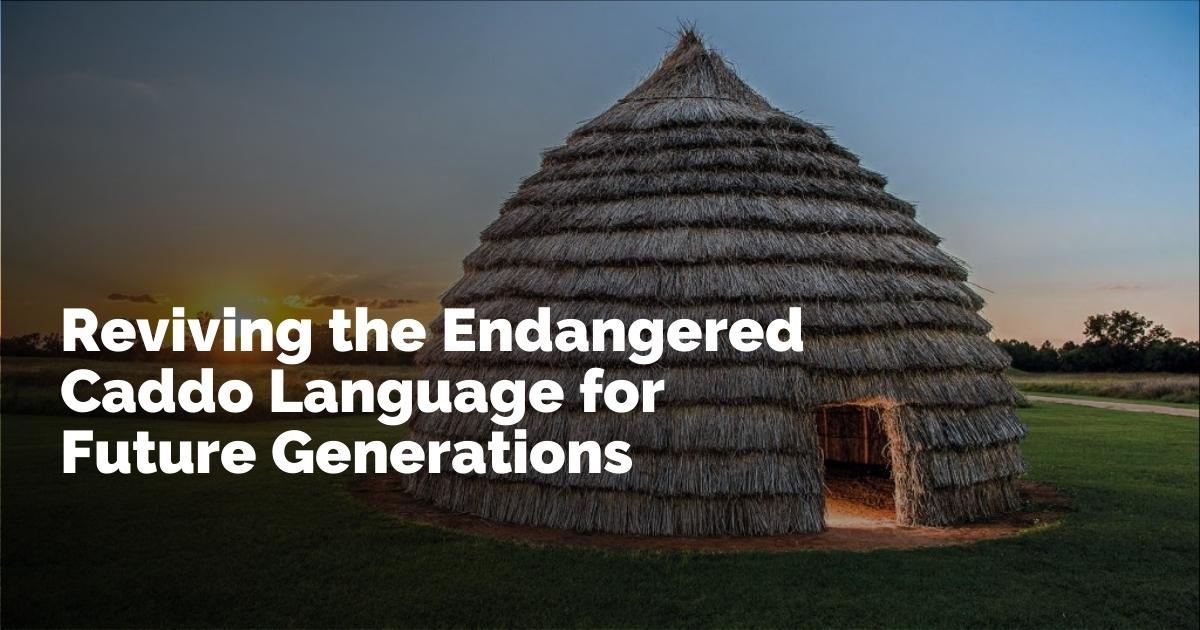The Intricate Tapestry of the Caddo Tribe and the Formation of Texas
Alaina Tahlate's journey into language preservation was heavily inspired by her great-grandfather. As a native Caddo speaker, he dedicated countless hours to recording and documenting an endangered language that once echoed throughout modern-day East Texas. Growing up, Tahlate would visit him weekly, absorbing his passion and wisdom. Today, she carries his legacy forward, teaching the Caddo language to children and adults within the Caddo Nation, which numbers more than 6,000 enrolled members, predominantly residing in Oklahoma. Yet, those fluent in the Caddo language are a mere two.
The historical narrative of the Caddo people is deeply woven into the fabric of Texas. The state's name "Texas," is said to originate from the Caddo word “taysha,” which means “friend.” Even the state motto, “Friendship,” adopted by the Legislature in 1930, pays homage to the Caddo. In the late 17th century, the Spanish established missions near present-day Caddo Mounds State Historic Site. As recalled by Tahlate, the Spanish referred to the Caddo as the "Texas Indians" because they introduced themselves as friends and allies. The influence of the Caddo on Texas extends beyond nomenclature, with Tahlate and her fellow Caddo members working tirelessly to preserve this rich history.
Historical Significance of the Caddo Nation
The Caddo Nation’s roots stretch back to at least A.D. 800, occupying a vast expanse of over 100,000 square miles through present-day Oklahoma, Arkansas, Louisiana, and Texas. The Caddo were composed of multiple interlinked communities, connected through familial networks. The Kadahodacho tribe, for example, lived primarily along “The Great Bend” in the Red River, while the Hasinai inhabited the Neches and Angelina river valleys near modern-day Nacogdoches.
Anthropologist Lauren Haupt, who is also a Caddo Nation member and co-steward at the Caddo Mounds State Historic Site, notes that the Hasinai were an advanced society at the height of their civilization. Caddo communities resided in dome-shaped homes constructed from tall wooden poles and covered in switchgrass. They were some of the first farmers in the area, growing maize, beans, and squash. The Caddo were also skilled hunters, crafting highly-valued bows from Osage trees, which they traded with Spanish missionaries.
The mounds, integral to their culture, were burial sites for community leaders and served as important civic and ceremonial centers. Situated along the Camino Real, a critical trade route, these mound sites featured temple structures atop earthen platforms. Early French explorers praised the route, likening it to the grandest roads in Paris.
The Struggles and Displacement of the Caddo
The 18th century brought devastation to the Caddo population as epidemics resulting from Spanish settlements decimated their numbers, which once exceeded 200,000. By 1835, the Caddo were pressured to sign a treaty under the federal government’s 1830 Indian Removal Act, surrendering their lands, including what would eventually be Texas.
With the birth of the Republic of Texas, the Caddo were pushed further west to the Brazos River Valley by encroaching Anglo settlements and growing hostility. Historian Phil Cross, a Caddo Nation member, recalls a turbulent period fraught with violence as both Indigenous peoples and Texans struggled for survival.
In 1847, under U.S. oversight, notably by Indian agent Maj. Robert S. Neighbors, the surviving Caddo built a community at the Brazos Indian Reservation near present-day Graham. However, violence persisted. Comanche raids were unjustly attributed to the Caddo, leading to an attack led by John R. Baylor in 1859, fueled by anti-Native sentiment.
Neighbors fervently defended the Caddo against Baylor’s aggression, even as tensions led to bloodshed. For their safety, Neighbors guided the remaining Caddo north to Indian Territory in what is now Oklahoma. Tragically, Neighbors was assassinated upon his return to Texas, a fate many attribute to a Baylor sympathizer.
His dedication to safeguarding the Caddo is memorialized at Fort Belknap, where Caddo gather on Memorial Day to honor his legacy with prayers, offerings, and communal meals.
Preserving Caddo Culture and Language
Despite the severe challenges they faced, the Caddo have worked diligently to preserve their culture and language outside of Texas. From the 1860s to the 1960s, many Caddo children were forced into boarding schools where speaking their native tongue resulted in punishment. This detrimental policy left Tahlate’s grandfather as a passive receptacle of their language, understanding but not speaking it. Her mother, a Caddo artist, lacks fluency in Caddo entirely.
The connection between the Caddo’s cultural history and their language is profound, as articulated by Tahlate. Within the rhythms of ceremonial Caddo dances lies the very origin story of their people. Nevertheless, Tahlate remains optimistic about the future of the Caddo language, inspired by the boldness of Caddo children who converse in their ancestral language during play, free from hesitation or fear.
Engaging with Caddo Heritage Sites
Though headquartered in Oklahoma, the Caddo Nation’s history remains vibrant through several Texas sites:
-
Caddo Mounds State Historic Site: Former Caddo village and burial ground, it reopened grandly in May 2024 after a 2019 tornado reconstruction. Visitors are urged to respect this ancestral cemetery.
-
Major Robert S. Neighbors Memorial: Near the old Brazos Indian Reservation, it offers insights into early Texas history, acknowledging Neighbors' dedication to the Caddo people.
-
Caddo Lake: Holding deep mythological significance, legends say it was formed due to a Caddo chief’s disobedience. The Kadohadacho resided here until around 1842.
- Nacogdoches: This city, within the Hasinai group’s region, draws its name from the Caddo community. Spanish settlers initiated a mission here in 1716.
The journey of the Caddo Nation is a poignant reflection of perseverance and cultural resilience. Through dedicated individuals like Alaina Tahlate, and the preservation of significant historical sites, the legacy of the Caddo continues to inspire and educate future generations.
출처 : Original Source

